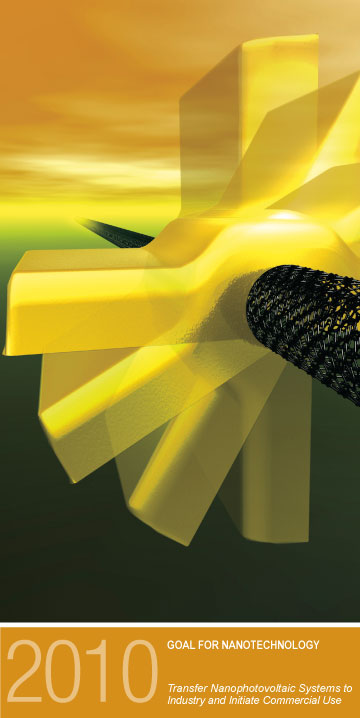
Frontiers in Nanoscience
Engineering a Nano Revolution
It’s been said that what a society can achieve depends on what it can make. Through nanoscience, which promises the ability to build machines and create materials atom by atom, what we can make is limited only by the power of our imagination. Nanoscience is no longer the stuff of science fiction. Economists predict a trillion dollar global market for nanoproducts within the next ten years, and the Federal government is investing hundreds of millions of dollars in nanoresearch. Berkeley Lab researchers have been at the vanguard of the nano revolution; this position of leadership is about to be substantially enhanced with the addition of the Molecular Foundry.
One of five nanoscience centers being established by the U.S. Department of Energy’s Office of Science, Berkeley Lab’s Molecular Foundry will provide the nanoscience community with the knowledge and tools needed to create technology that operates within the nanometer length of scale. (A nanometer is one billionth of a meter, one thousandth the size of the micrometer scale of today’s electronic technology.) It will house facilities for the development of inorganic and organic nanomaterials, nano-fabrication techniques, biological nanostructures, and nanotools. The Foundry will be adjacent to the National Center for Electron Microscopy (NCEM), which features electron microscopes capable of imaging even the tiniest features on nanosized structures.
The list of advancements in nanoscience already achieved by Berkeley Lab researchers is lengthy. Scientists here were the first to grow nanocrystals in a variety of shapes, rather than the simple spheres everyone else had produced. They were the first to fashion insulated nanowires, buckyball wires sheathed in a boron nitride coating, and created the world’s first nanowire nanolasers, measuring just under 100 nanometers in diameter (about one ten-millionth of an inch). With the opening of the Molecular Foundry, Berkeley Lab researchers expect this list of accomplishments to grow.
About the Image
World’s Smallest
Synthetic Motor
A team of scientists led by physicist Alex Zettl, who holds a joint appointment with Berkeley Lab’s Materials Sciences Division and the UC Berkeley Physics Department, succeeded in creating the world’s smallest synthetic motor.
Called a synthetic rotational nanomotor, this device consisted of a gold paddle-shaped rotor blade, measuring between 100 and 300 nanometers in length, that was connected to a carbon nanotube shaft less than 10 nanometers thick. While the first version of the Berkeley nanomotor was about 300 times smaller than the diameter of a human hair, the technology behind it allows for future versions to be made even smaller — perhaps as much as five times smaller. For their accomplishment, Zettl and his colleagues received a 2004 R&D 100 Award, which is given by R&D Magazine in recognition of the “100 most technologically significant new products and advancements over the past year.” The R&D 100 Awards have been called the “Oscars of Technology.”
The synthetic rotational nanomotor has been clocked at 33,000 cycles per second and is believed capable of speeds approaching one billion rotations per second. Because the carbon-carbon bonds connecting the rotor blade to the shaft are practically frictionless, the motor can run indefinitely without wearing down. It is also rugged enough to withstand the harshest of environmental conditions, including extreme temperatures and radiation.
Potential applications of the synthetic rotational nanomotor technology include biological and environmental sensors, cell phones, optics, airbags, tire sensors, digital pens, blood pressure monitors, extremely smart subwoofers and antenna alignment. The technology should also find a broad range of applications in the field of cosmology for the exploration of deep space.
“This was the first nanosized device where you can put external wires on it and have something rotating that you can control,” Zettl said, when the invention was announced. “There are biological motors that are slightly smaller in size, but ours can operate in a vacuum and over wide frequency and temperature ranges.”
